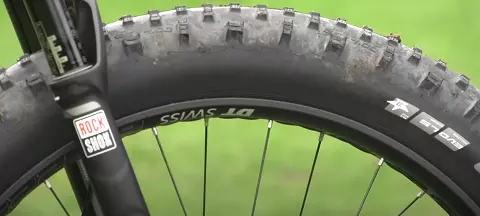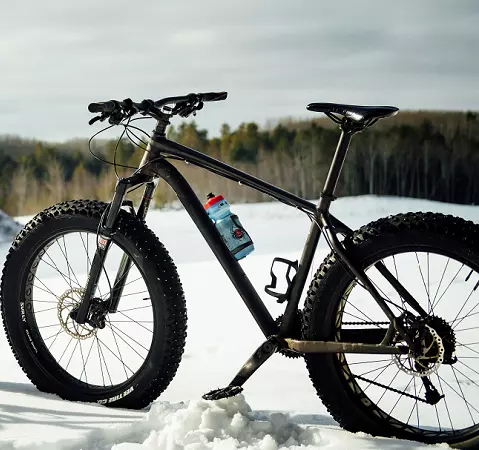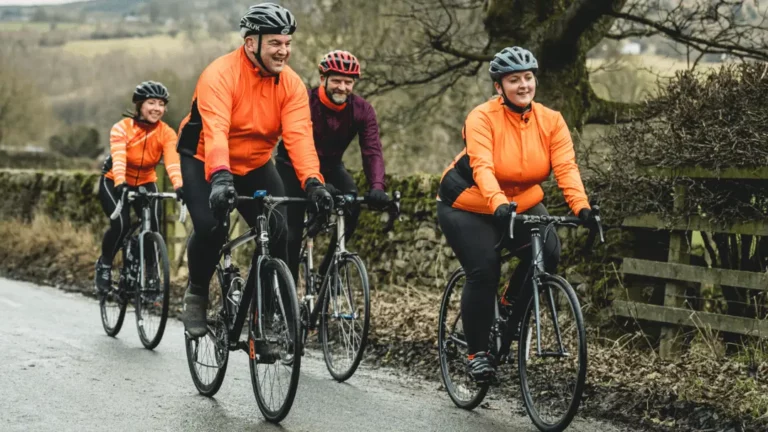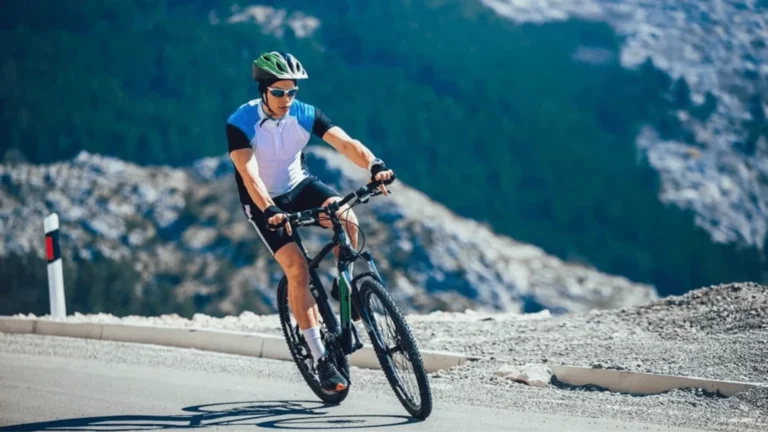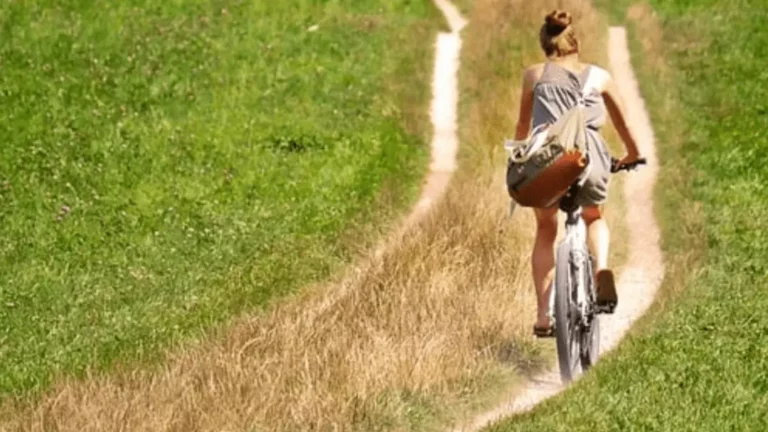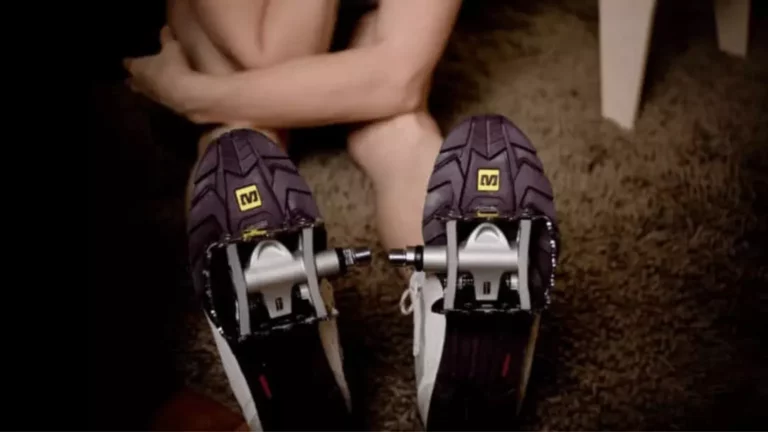What is a Fat Bike Good for?
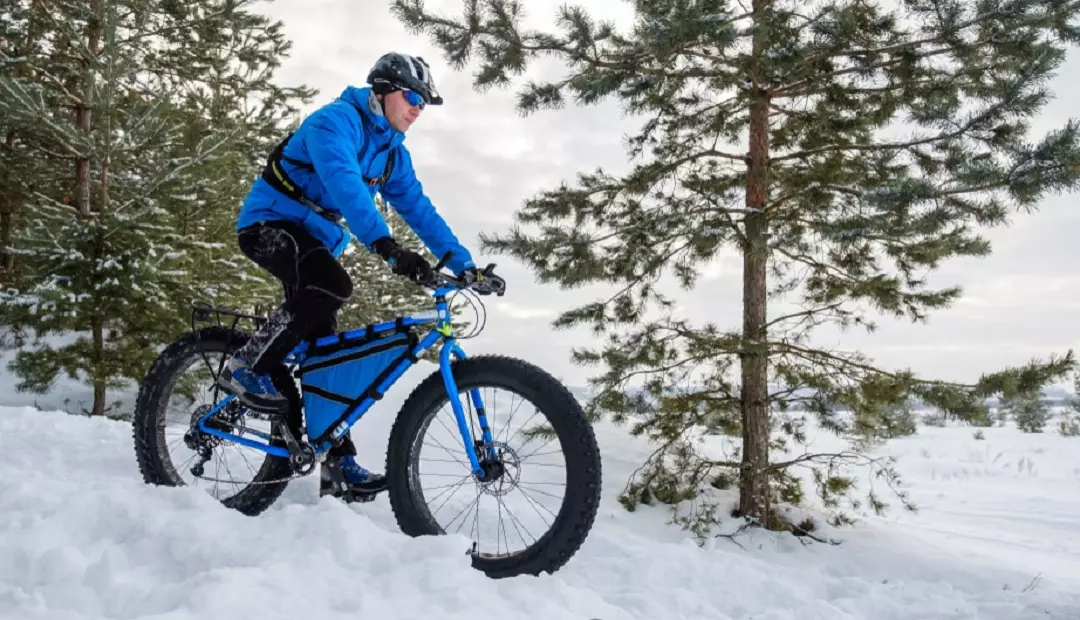
The latest trend in the cycling world at the moment is ‘fat biking’. The strange name relates to the width of the tires used on these bikes. Fat bikes are like mountain bikes in that they look similar and are designed to ride over rougher terrain.
Where fat bikes differ from mountain bikes though, is the tire width. Fat tires are a minimum of 3.8 inches wide and can be over 5 inches! Fat bikes also don’t use suspension systems such as front suspension or full suspension. Instead, they provide suspension in the softer tires.
The tires are able to provide suspension because they do not need to be filled with as much air pressure as mountain bike tires do. This makes the tires less firm, so they are much softer, increasing your comfort and the suspension when riding over tricky terrain.
A good-quality fat bike will be able to take you anywhere with ease. The ‘fat’ tires make every ride super smooth and comfortable while remaining in control in otherwise dodgy conditions.
What is the point of a fat tire bike?
Fat tire bikes are designed to withstand any conditions, so you’ll be able to ride no matter the weather as they can even ride over snow. They also work fine with sand, harsh trails, and mud.
Their tires are extra wide and soft making them super comfortable too! Moreover, these bikes require very little maintenance, especially during the summer months,
The point of a fat tire bike is to offer an exciting, new alternative to road bikes or mountain bikes. They allow you to try riding at a different pace and are perfect for beginners learning to ride as the extra weight and width make them much easier to balance.
Why are fat tire bikes so expensive?
Fat tire bikes can range, in terms of price, from around $500 to $5,000. This may seem pretty expensive but the reason they cost so much is because of the manufacturing and customization costs that go into making them. For example, lots of elements of the fat bike are specially made such as the gears, frame, and tires.
If you’re looking at the smaller end of that budget, consider losing a few accessories. For example, gears are optional on fat bikes. This is because they are often only used for one-speed cruising.
The gear sets can add extra weight to your bike not to mention extra dollars to the price tag. So, going for a one-speed model is a great option if you need to trim down the price.
Are fat bikes comfortable?
Due to their low pressure, and extra wide tires, fat bikes can be the most comfortable bikes available right now. This is because the extra volume acts as a super shock absorber. The tires can excellently absorb shocks and vibrations when riding over any terrain. Plus, the elasticity of the tires also helps to absorb impact.
The tire pressure can be adjusted from 30 PSI (pressure per square inch) to an incredibly low 7 PSI! So, you can adjust it depending on the terrain and comfort level desired.
However, fat bikes generally come designed with a rigid frame, meaning they are not equipped with a suspension system. Instead, they rely on fat tires to do all the work. The low pressure in the tires makes them much softer and able to absorb any impact. This is what makes fat bikes so comfortable, particularly on your backside.
Are fat bikes good for beginners?
Fat bikes are actually great for beginner riders because the tires’ wider surface area creates greater balance than thinner, firmer tires. This makes fat bikes the perfect bike to learn to ride on.
Due to their tires having a lower tire pressure, these bikes will also be relatively slow to ride. The slower the bike the less likely you are to fly off it and injure yourself – another reason why these bikes are great for beginners.
However, the extra weight could be a struggle when climbing hills, for example, particularly for lighter riders.
Are fat bikes good for mountain biking?
Fat bikes are generally slower than mountain bikes as a result of the lower tire pressure making them harder to peddle fast.
That being said, you can use a fat bike on most trails and once it gets up to speed you’ll feel like you’re flying even over the roughest terrain!
While most fat bike frames are rigid as they come with no suspension system, some fat bikes even come with a hardtail frame meaning they have added suspension in the front of the bike. This makes them even better suited to mountain biking.
This, complete with the suspension in the tires makes fat bikes a real contender in the fat bike v mountain bike debate.
Are fat bikes harder to ride?
While fat bikes are said to be softer and slower, making them easier to ride especially if you’re a beginner. Their extra weight does make them harder to ride in certain situations. The added weight can be harder to pedal up-hill, as well as pedal normally on flat surfaces like sidewalks.
It’s also worth noting that reaching higher speeds is much harder on a fat bike. This may affect you when mountain biking.
However, it cannot be denied that these bikes are the easiest to ride on more unpredictable terrain like snow, mud, and sand. It all depends on where you’ll be riding.
Can a fat bike be your only bike?
Fat bikes can handle all terrain making them a great choice for an all-rounder bike. You should definitely consider where you will be riding most of the year, though. Fat bikes can be expensive and if you only intend to ride it on roads, for example, you’d be much better off purchasing a cheaper road bike.
Also, if you’re a mountain biker looking to switch things up, it’s important to be aware that fat bikes won’t get you riding at as fast speeds as you’re used to on a normal mountain bike. Plus, compared to full-suspension mountain bikes, fat bikes are quite rigid. A traditional mountain bike is also better for expert-level trails.
Can you use fat bikes in the summer?
Fat bikes are designed to withstand most conditions from snow to mud and while they’re not specifically designed for summer conditions, they are super fun to ride during the warmer months.
Plus, there is far less maintenance involved in prepping your bike for summer. Moreover, if the beach allows it, fat bikes are great for riding over sand, so you can explore the beach!
Do fat bikes have gears?
Not all fat bikes have gears. This is because the gears add weight to the bike and some users want to keep the bike as light as possible to increase maneuverability.
Typically, fat bikes will come with gears because it makes them more versatile. Having gears on your fat bike will allow you to ride it anywhere, not just over extreme terrain.
Others, however, don’t need them and opt for a single-speed model instead. These single-speed models are mainly used by riders who only want to cruise on beaches, for example.
How much does a fat bike weigh?
There’s no denying that fat bikes are heavier than your average bike. The lower-quality bikes will weigh around 30 to 40 lbs. Anything much lower than this wouldn’t really be considered a fat bike and would be more on the mountain bike side, weight-wise.
Don’t let the weight put you off, though. They need to be able to take you anywhere and withstand any terrain. In order to handle this, they’re designed to absorb almost any bumps and vibrations.
The biggest contributor to the weight of the bike are the extra large tires. Fat bikes have bigger tires than any other bike. The frame is also often larger than other bikes. These together are obviously going to add to the overall weight of the bike.
Another culprit is the gear set. One of the biggest reasons riders choose not to add gears to their fat bikes is because of the extra weight they bring.
Final Say: What Is A Fat Bike Good For?
Fat bikes are clearly a fun, new and exciting way to get around. They’re super comfortable and provide you with excellent balance, making them a great choice for beginners and more seasoned riders alike.
Fat bikes can take you pretty much anywhere! Their multi-terrain design means they can be used for whatever you need them to. This is particularly useful if you’ve only got the budget for one bike in your life.
They also require very little maintenance which is great if you don’t want your bike to take over your life – perfect if you’re just an average rider just looking for something fun and versatile.
They give you an unmatched grip on tricky terrain and keep you riding all year round as the weather won’t affect these bad boys!

Steve Beck is a passionate cyclist and experienced writer covering the cycling industry for over a decade. He has a wealth of knowledge and expertise in all bike-related things, from the latest products and technologies to the best routes and trails. His articles are well-researched, informative, and engaging, and he has a talent for explaining complex cycling concepts in a way that is easy to understand. Steve can be found on the road when he’s not writing about bikes, putting his knowledge and skills to the test.

